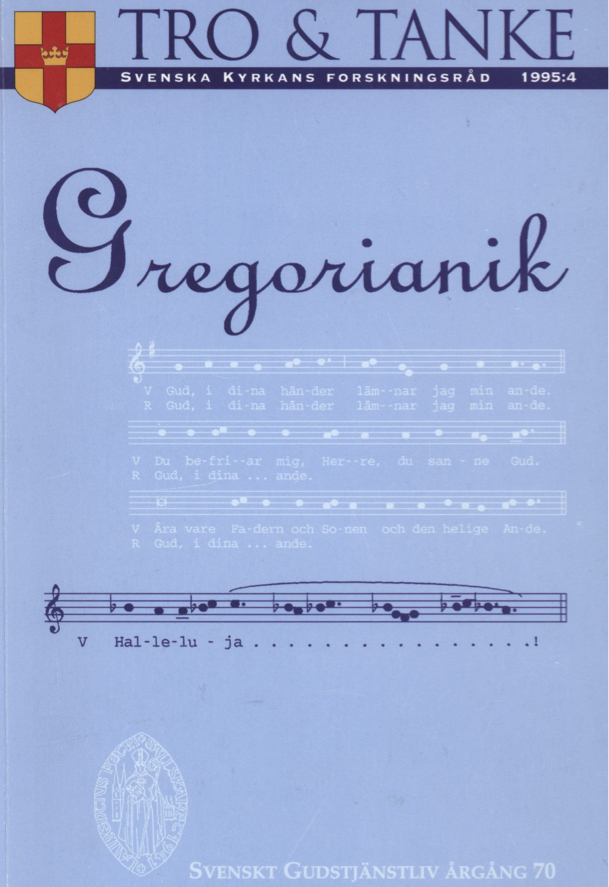Musiken till Den svenska tidegärden
Abstract
The liturgy of the hours was revived in the Church of Sweden (Evangelical-Lutheran) beginning in the 1920s, above all through a breviary and an antiphonale edited by Arthur Adell and Knut Peters. Their work was continued by the Laurentius Petri Society.
A completely revised antiphonale using the new Swedish Psalter translation will appear step by step starting with the complines for the week and for the liturgical year. In the meantime, the first Catholic breviary in Swedish has appeared, and a shorter version of this, also including material used in the Church of Sweden, will soon appear, edited by an ecumenical committee. The ecumenical text will (more or less) be used also in the antiphonale. As tor the music for the hours no ecumenical consensus is within sight, the Catholics using melodies more to be characterized as new compositions than as genuinely Gregorian.
The author argues vigorously tor the possibility of adapting Gregorian melodies to Swedish texts but criticizes the editors of the earlier antiphon ale tor accepting too many conflicts between linguistic and musical accents when adapting the classical psalmody formulas, partly depending on their unquestioned application of the Solesmes rules of adaptation. He proposes (1) that the psalm texts be slightly revised to avoid certain rhythmic ditticulties but also that more attention be devoted to the different possibilities of different psalm tunes to solve some such problems; (2) that, according to medieval practice, up to three unaccented syllables should sometimes be permitted to follow the accent note; and (3) that since, in some psalm texts, last syllables carrying the accent are frequent in verse or half-verse endings, special rules be introduced to solve some of these cases. Above the possibilities of mediatio correpta and of moving the accent from the accent note to the last note, in some psalm tunes the accent note and the last note should be allowed to be united in a double note taking the last linguistic accent if no further syllables follow after it.
The author presents the regular eight psalm tunes, in each case giving examples showing the adaptation of Swedish text applying the revised rules of adaptation. All examples are from the new edition.
He also presents the eight corresponding Church modi, points at some characteristic traits in different modi and presents a couple of adapted Swedish antiphons from the new edition. The difference between large individual antiphons for the mass and the shorter office antiphons is stressed, the later often forming ”families” making a very flexible adaptation possible. Many adaptations in the new edition refer to such a ”family” rather than to an individual Latin antiphon. So-called centonisation (creating a new totality out of many small brick-stones found in the sources) is also used to a certain extent.
For the choice of good hymn melodies, Stäblein’s and Moberg’s editions of European and Swedish hymn melodies have been much used. The editors have tried to find well singable melodies avoiding over-simple monotony as well as over-loaded melismatic complexity.
Downloads
Publicerad
Nummer
Sektion
Licens
© författarna, Laurentius Petri Sällskapet för svenskt gudstjänstliv samt Artos & Norma bokförlag. Det är tillåtet att kopiera och använda material ur Svenskt Gudstjänstliv för forskningsändamål om källan anges. För övriga ändamål kontakta respektive artikelförfattare samt förlaget. Särskilda restriktioner kan gälla för bildmaterial.


